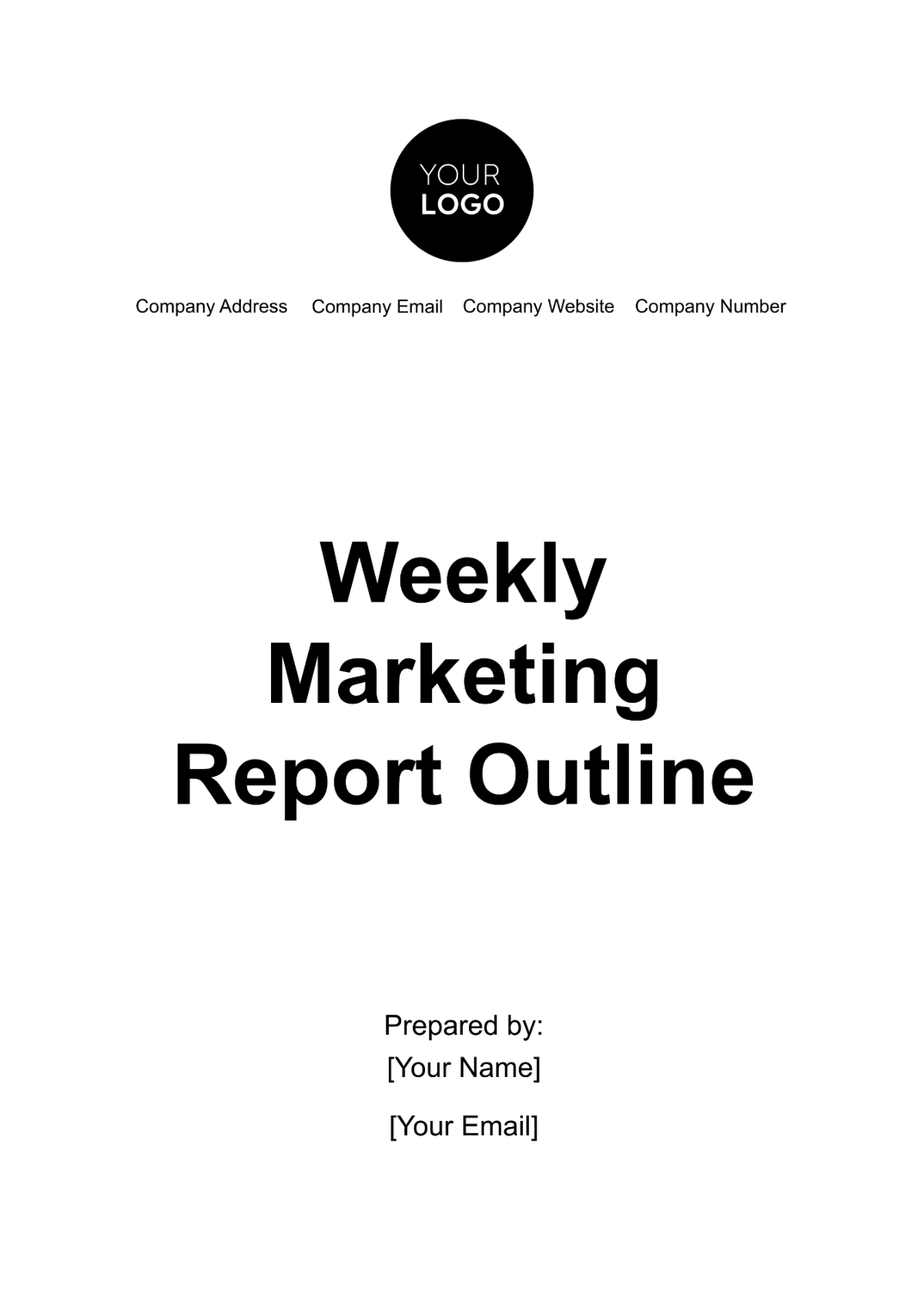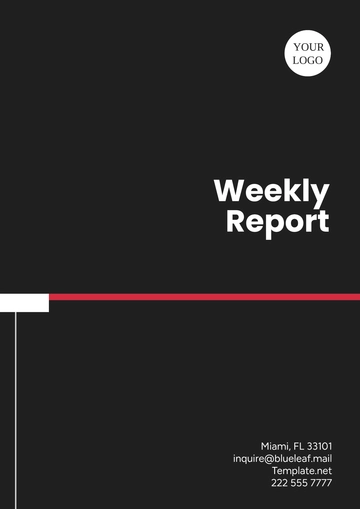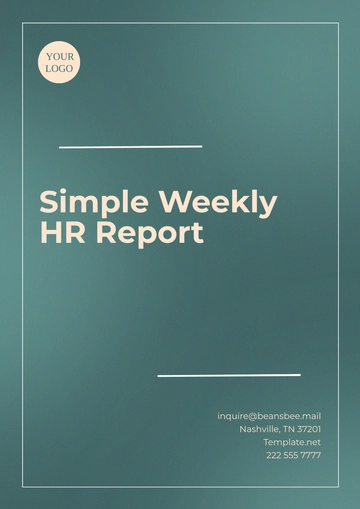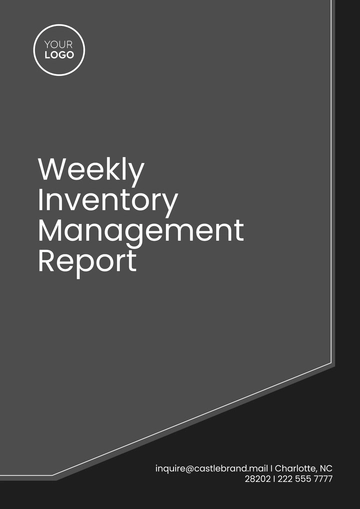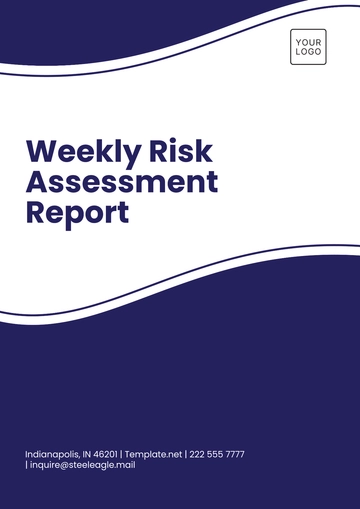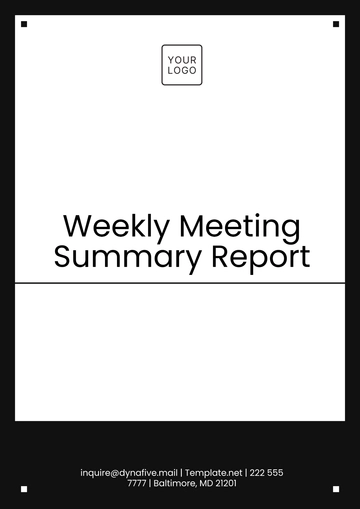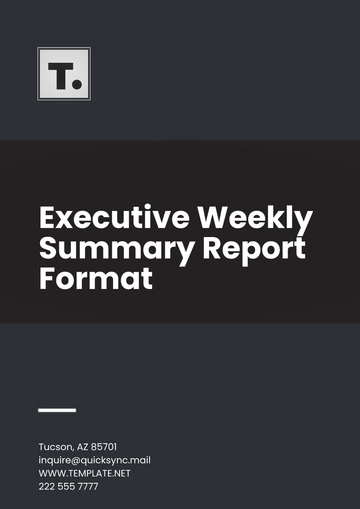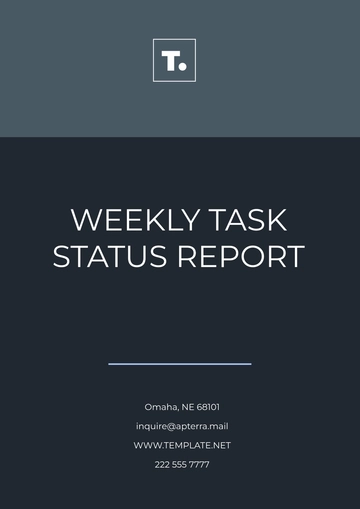Weekly Marketing Report Outline
I. Introduction
A. Overview
(Provide a brief summary of the overall marketing performance for the week. Highlight key achievements, major campaigns, and any significant changes in metrics.)
B. Objectives
(Summarize the main objectives that were set for the week. Include any specific goals related to campaigns, engagement, or conversions that the team aimed to achieve.)
II. Campaign Performance
A. Campaigns Overview
(List all the campaigns that were active during the week. Provide a brief description of each campaign and its target audience.)
B. Key Metrics
(Detail the primary metrics used to measure campaign success, such as impressions, clicks, conversion rate, and return on investment.)
Campaign | Impressions | Clicks | Conversion Rate | ROI |
|---|
[New Year Extravaganza] | [10,000] | [500] | [5]% | [150]% |
| | | | |
| | | | |
| | | | |
| | | | |
| | | | |
C. Budget Allocation
(Detail how the budget was distributed across different campaigns and platforms. Include insights into whether the budget spending was within the planned thresholds.)
Campaign | Budget Allocated | Budget Spent |
|---|
[New Year Extravaganza] | [$5,000] | [$4,500] |
| | |
| | |
| | |
| | |
| | |
III. Audience Insights
A. Demographics
(Describe the key demographic details of the audience engaged by the marketing campaigns. Include age, gender, geographic location, etc.)
Demographic | Details |
|---|
[Age Range] | |
| |
| |
| |
B. Behavioral Analytics
(Discuss the behaviors observed from the audience. Include browsing habits, content interactions, and purchasing patterns.)
IV. Social Media Performance
(Provide an overview of performance on various social media platforms such as Facebook, Twitter, Instagram, etc. Mention the engagement levels and reach for each platform.)
Platform | Likes | Shares | Comments | Follower Growth |
|---|
[Facebook] | [1,000] | [200] | [150] | [50] |
| | | | |
| | | | |
| | | | |
| | | | |
| | | | |
V. Content Performance
A. Top-Performing Content
(List and describe the top-performing content pieces for the week. Include information about what made them successful.)
Content Piece | Description | Success Factors |
|---|
[Video: "Product Demo: New Tech Gadget"] | [A detailed video showcasing the features of our new tech gadget.] | [Engaging visuals, clear demonstration, and effective call-to-action.] |
| | |
| | |
| | |
| | |
| | |
B. Content Engagement
(Detail the engagement metrics for different content types such as blogs, videos, infographics, etc. Include metrics like views, shares, comments, and time spent on content.)
Content Type | Views | Shares | Comments | Time Spent |
|---|
[Blog Post] | [15,000] | [500] | [150] | [4 minutes] |
| | | | |
| | | | |
| | | | |
| | | | |
| | | | |
VI. Website Analytics
A. Traffic Overview
(Provide an overview of the website traffic. Include total visits, unique visitors, and page views.)
Metric | Count |
|---|
[Total Visits] | [15,000] |
| |
| |
| |
| |
| |
B. User Behavior
(Discuss insights into user behavior on the website. Include metrics like bounce rate, average session duration, and pages per session.)
C. Traffic Sources
(Identify the major sources of traffic to the website such as organic search, paid search, direct traffic, and referrals.)
Source | Visits |
|---|
[Organic Search] | [5,000] |
| |
| |
| |
VII. Lead Generation
A. Leads Overview
(Summarize the total number of leads generated during the week. Include a brief description of the lead generation sources.)
Lead Source | Leads Generated |
|---|
[Website Forms] | [300] |
| |
| |
| |
B. Conversion Metrics
(Provide details of the conversion rates from leads to customers. Include data on the stages of the sales funnel.)
Stage | Leads | Conversion Rate |
|---|
[Initial Contact] | [500] | [10]% |
| | |
| | |
| | |
| | |
| | |
VIII. Email Marketing
A. Campaign Overview
(Detail the email marketing campaigns sent out during the week. Include information on the target audience and campaign objectives.)
B. Key Metrics
(Provide statistics on email performance such as open rates, click-through rates, and unsubscribe rates.)
Campaign | Open Rate | Click-Through Rate | Unsubscribe Rate |
|---|
[Product Launch Alert] | [20]% | [5]% | [0.2% |
| | | |
| | | |
| | | |
| | | |
| | | |
| | | |
IX. Challenges and Recommendations
A. Challenges
(Identify any challenges faced during the week. Highlight the impact of these challenges on marketing performance.)
B. Recommendations
(Suggest actionable recommendations to overcome the identified challenges. Provide specific strategies to improve future marketing efforts.)
X. Conclusion
(Summarize the key takeaways from the weekly report. Include final thoughts and potential areas for improvement in the upcoming weeks.)
Marketing Templates @ Template.net
